Your cart is currently empty!
Ruffling up some feathers the Chinese way

The Chinese has an almost pathological obsession with beautiful feathers.
The Tang dynasty emperor from the 8th Century fell in love with a piece of Indian music called the Brahmin Tune and decided to adapt it into his Chinese court to be played and danced to. He renamed the dance and music Raiment of rainbows and feathers. Instead of kingfisher feather as what most sources said, I think the dancer (Lady Yang) probably wore an outer coat made of different coloured feathers such as peacock, pheasant, and perhaps even parrot (I will talk about parrots in the 8th century in detail the next time)!Nevertheless, the craft of kingfisher feather accessories remains a highly mysterious and valued craft unique to China.
Tang dynasty China was one of the earliest periods with documented proof that feathers were used widely for decorations. It was such a ‘fashion statement’ that even the Japanese adopted this technique in their art from the same period.
I thought of doing one entry related to feathers in particular. And the wonderful brilliance of colours adored by the ancient Chinese (men and women alike, mind you~!).

The oldest use of feathers in Chinese textiles (and accessories) was said to date to as far back as 2,000 years ago during the Han dynasty where the use of the word 翡翠(feicui) which refers to Jadeite today, was originally used to refer to the Kingfisher feathers. Jadeite, actually has a very short history in Chinese culture, as it was from Myanmar and was not very valued by the Chinese until mid to late Qing dynasty (last 300 yrs or so). Nephrite was the kind of jade highly valued by the ancient Chinese.

Anyway, while there were brief mentions of such in poems from about 2,000 years ago, and an excavation discovery from the period belonging to the Xiongnu nomadic tribes revealed textiles made of silk and kingfisher feather–definitely a Chinese influence:
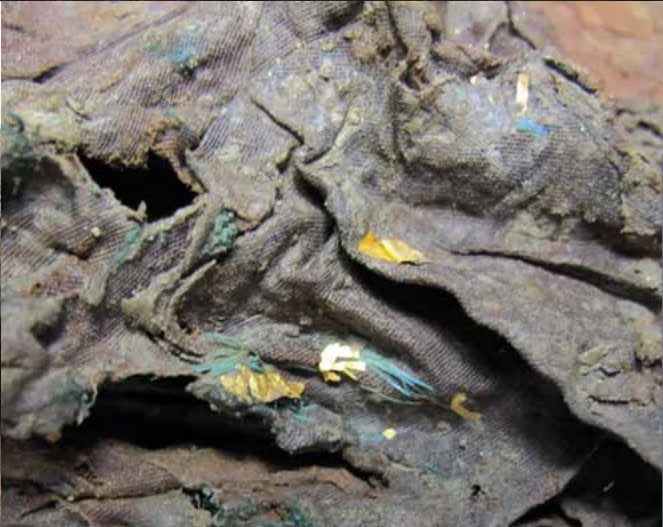

The earliest traceable visual record in China would probably be from the Tang dynasty some 1,300 years ago.
Although it’s not a physical dress made of kingfisher feather that we could get hold of from China itself, or any accessory during that period, but we could definitely see hints of it on paintings or from certain use of feathers in artefacts. Nobody ever confirmed it, but it definitely looks probable that the blue tinge on the crown of the courtesans from Tang was from the kingfisher feathers.

Notice the crown she’s wearing, looks a little like the Chinese opera crown wore by female leads today right? I highly suspect that the blueish-green parts are made of kingfisher feathers.
There is no surviving physical kingfisher feather from that period in China, but we could still find remnants of feather decoration on the screens of Shosoin (Collection of the Japanese emperor in the 8th century) below:

It’s interesting to note that the women depicted on the screens look very much like Tang dynasty women, but it was an item made in Japan in a Tang style. How do we know? The feathers of course! Scientists have managed to examine whatever feather was left from the 8th century on the screen, and concluded that they were taken from a bird native to Japan! So it is likely that the Japanese got inspired by the crafts and practices in Tang dynasty China (since they were really quite big on Chinese culture then), that they decided to do a local interpretation of it!

Back to the Chinese imperial use of kingfisher feathers, the Song dynasty emperor was known to award his court officials with robes made from a wide range of materials including one which was made of kingfisher feathers. The practice of making fabric from kingfisher feather dates to about Tang dynasty (some 1,300 yrs ago) as mentioned in famous poet Wang Wei’s poem from that period.
During the Qing dynasty, we could find emperor’s robes made from peacock feather threads. Yes, that’s the peacock feather threads mentioned in the Yanxi Palace drama show as well, except that the one they used in the show looked nothing like the actual one:


One thing about beautiful things such as the shine and colours of silk threads and feathers, is that cameras have problem capturing them in their full glory. The texture is just really hard to captured in a 2D image since the colours of feathers tend to change with the varying angles of light. So the actual imperial robe with the peacock feather looks rather underwhelming in an image:

But if you look unclose, you could probably imagine how exquisite it would’ve been if you see it in person up close and personal:
Just now I mentioned the Chinese opera-like kingfisher feather crown in the Tang dynasty painting. Perhaps it is pure coincidence, but traditional Chinese Opera singers would break their back to get their hands on an entire full hair decoration made of kingfisher feathers.

It was said that the most famous opera singer in the early 20th century, Mei Lan Fang, owned a kingfisher feather full set of headdress made from ‘soft’ kingfisher feathers. Kingfisher feather accessories are divided into ‘hard’ feathers which are coarser and ‘soft’ feathers which are finer. There are altogether 4 types of kingfisher feathers often used in Chinese traditional accessories (mainly for the imperial family or aristocrats in the distant past, and whoever could afford it in the recent hundred of years).



As you can see above, the hard feathers are a lot larger than the soft ones, but even that is not too large at only about 7cm long. The small one’s about 2-3 cm long. Out of which, 60% of them can’t be used due to the existence of black or grey parts or other ‘less pure’ colours.

The hard feathers are made up of 10 from each wing, and 8 from the feather. The soft ones are from the back of the bird. After going through the entire process of trimming and gluing the feathers using organic glue made of cow bones, each tiny area of accessories of like 1cm x 1cm, you would need to kill at least 1-2 birds if you want the ‘soft’ feather look.

That is why it was highly controversial lately for Chinese opera singers to admit to owning real kingfisher feather crowns.


The Qing dynasty palace ladies have left behind a wealth of kingfisher feather accessories and decorations for us to look at in the museums, so instead of trying to own one, perhaps one could visit the museum more often! The type of kingfisher accessories that you can get from the craftsmen these days are definitely nothing compared to the imperial crafts because of the amount of details and dedication they have towards it:
Of course, where there’s a will there’s a way. You can still get kingfisher feather accessories, but there are also plenty of replacement materials out there that can look really good too at 1/100th of the cost!
Not all kingfisher vanity is Chinese
In case you think only the Chinese is capable of thinking up such a way of decorating themselves, hold my baijiu while I whip out the dark history of the West’s use of birds as accessories (includes kingfisher too). It went as far as using an entire bird (completely indiscreet I know, hurts my Asian aesthetics *hairtoss moment*).


I’m not familiar with western fashion history and feathers, but if you are interested to know more, you can get them HERE and HERE. The ancient Chinese women would not be caught dead having corpses of birds on their dresses or head. Everything has to be properly processed and stylised to fit the auspicious motifs and has good symbolism. Fashion was never meaningless or pure aesthetics to the Chinese. EVEN if there is no meaning, they would come up with some fancy reason.
Towards late Qing dynasty (the last 200 years), there was a switch to use cloisonne in place of kingfisher feather accessories–cheaper and less fragile. But the kingfisher feathers still has its fan. The last kingfisher factory in China closed in 1933 due to poor economic performance (not so much of the ban).
Like the West, there are laws against capturing kingfishers as they are considered endangered species or protected species. But it was not enforced by the government.
Dyed goose feather (dyed is not dead, no goose is harmed in the process)

Silk or synthetic coloured threads

Well, at the end of the day, it’s really a personal choice. If you wish to YOLO or you wish to do your part in preserving this endangered species of bird.
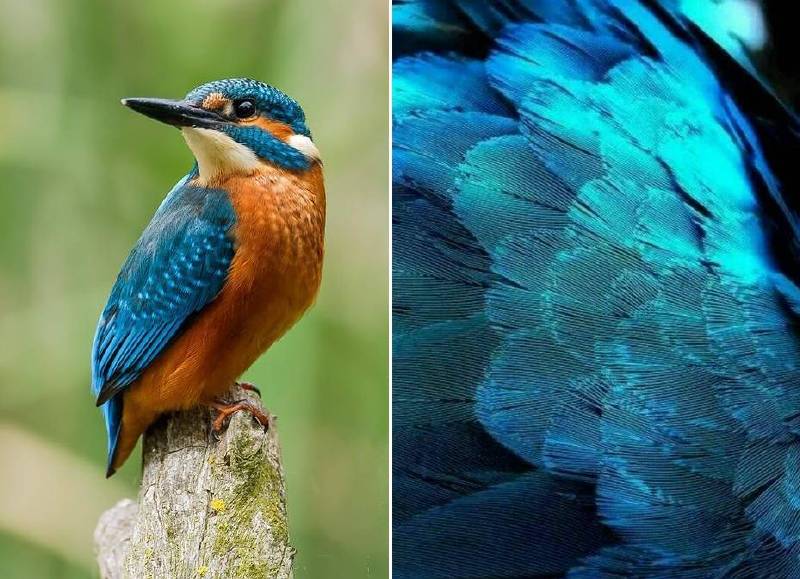
I am working with a silk-threads craftsperson to recreate certain antique kingfisher pieces, and you can order them from my online shop from November onwards. Yes, will be working on a few items for the shop to raise fund for the performance I’m putting up next year. So stay tuned~!
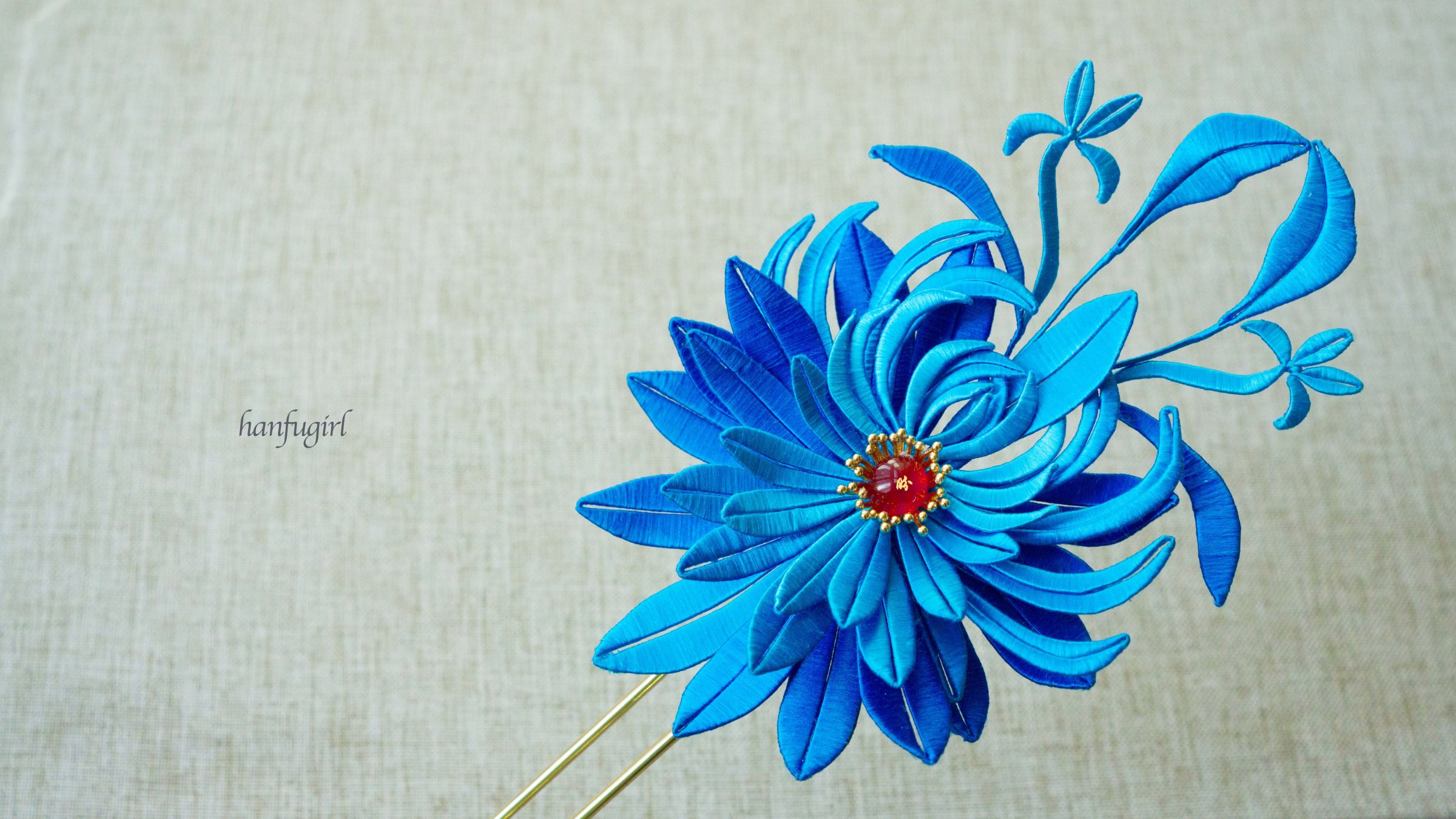
Meanwhile, here’s a visual feast of the many paintings and artefact of ancient empress and palace women in their beautiful kingfisher feather accessories. Also, beyond accessories, they even made fans, screens and decorated cups with the feathers!
If you’re interested in knowing more about this craft, I have also done up a few “Fact or Fiction” clarification at the end of the article because I do realise that people like to sensationalise things they don’t know much about, or they villainfy things they don’t agree with. Both of which are not useful in understanding this craft.
Historical paintings from the Qing dynasty of women in various kingfisher accessories:

Fact or Fiction
Statement: Practitioners pluck the feathers out from birds while they were alive to ensure that the colours of the feather remain brightly coloured.
Verdict: Fiction. People of different agenda tend to sensationalise this trade or craft. The businessmen trying to make it seem like it’s a mysterious colour that has to go through certain “ritual” that’s somewhat mystical to get the colour. Animal rights people trying to make it seem like it is a really cruel trade. The truth is somewhere in the middle especially if you are meat-eater. Since ancient times dead birds have been given as tribute from southern cities or southeast asian region to China and feathers were taken from these corpses.
Statement: The newer kingfisher feather accessories used leftover feathers from the Qing dynasty, leftover feathers from opera troupes or feathers from people who got them before the last kingfisher factory closed in 1933. So it was not killing new birds.
Verdict: Fiction. They are just statements to make you feel better about buying these items. Unlikely to have such abundance of feathers to support so many accessories with such large surface area. Also, it is much more economical to kill new birds than to buy from antique dealers. So if you buy any kingfisher feather accessories that are made in recent years, or antique kingfisher feather accessories that are newly repaired, do know that they’re probably newly killed birds. Although, there are also officially sourced (so not illegal) kingfisher feathers which the Chinese government would get for purposes such as repair of artefacts, or making special items as dignitary gifts etc.
Statement: The vibrant colours on the kingfisher feather does not fade with passing time.
Verdict: Fact. Provided you keep it in pristine condition away from dust and other physical touch etc. Never touch the surfaces with your hands. It is tempting, but resist you must. Dyed goose feather and dyed silk would fade over time (but it’s probably over a long time) especially with constant exposure to sunlight. Cos we all know how fragile silk can be. Feathers, on the other hand, are used to such exposures.
Statement: Kingfisher feather accessories demand is as bad as ivory.
Verdict: Tricky question. Fact if you look at it from the angle of unnecessary killing of a life for one’s vanity. Fiction if you are looking at this being the main cause of bird extinction. Lost of habitat is often the larger concern for the survival of this beautiful bird. The average lifespan of a common kingfisher (there are over 120 species of them) is 5-7 years, although a rare few could live up to 16 years. The reproduction/replacement rate of the bird is also a lot faster than elephants. Plus, the demand for kingfisher feather really isn’t very high as there are many substitutes that are 1/10th the price around. The resale value of kingfisher feather is also not as high as ivory (since actually there are also a lot of kingfisher birds around so there’s no limited supply at this point) so there is not much incentive for people to stock up and sell at higher value.
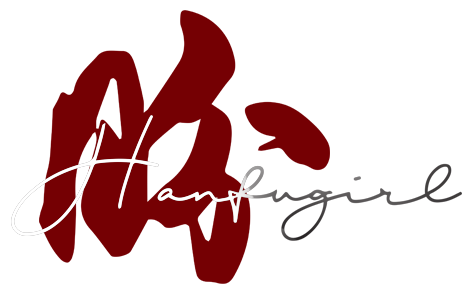

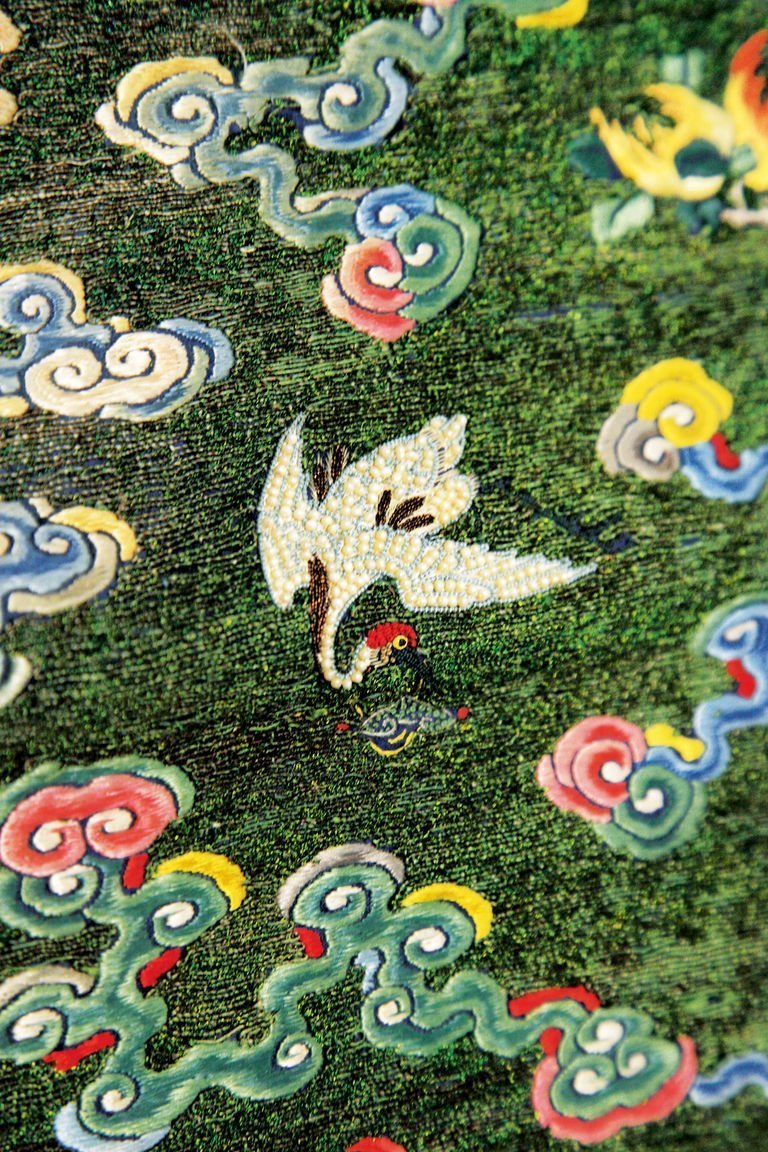
Leave a Reply